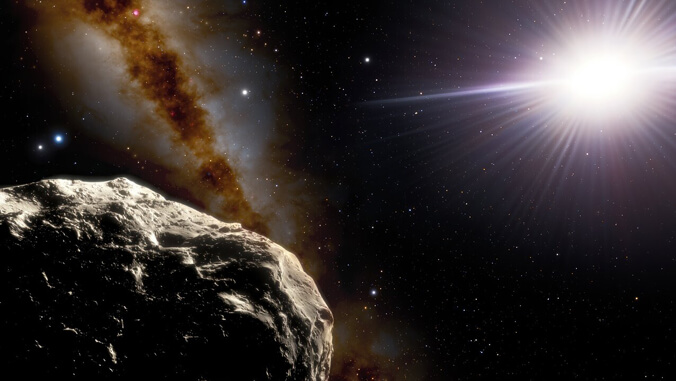
An asteroid bigger than the Mānoa campus at the University of Hawaiʻi, discovered by a UH Institute for Astronomy (IfA) telescope atop Haleakalā, Maui, is only the second-known object of its kind ever found. The near-Earth object, asteroid 2020 XL5, was discovered by the Panoramic Survey Telescope and Rapid Response System (Pan-STARRS)-1 in December 2020. The object is an Earth Trojan asteroid, which is an asteroid companion to Earth that orbits the Sun along the same path as our planet.
2020 XL5, with a diameter of about 0.75 miles, is about 60 million miles from Earth and does not currently pose a threat. However, studies of Earth Trojan asteroids are critical, because they have orbits very similar to Earth's, increasing the likelihood of an impact from these objects. These kinds of asteroids have largely gone undetected because they are close to the Sun in the sky, so observers must search low in the east before sunrise, and low in the west after sunset.

"Earth Trojans have been suspected as a source of Moon and Earth impactors. Because they have orbits very similar to Earth's, they have a higher long-term potential for hitting us compared to typical Near-Earth asteroids," said Richard Wainscoat, an IfA astronomer who leads the Near-Earth Object survey project with Pan-STARRS. "Pan-STARRS 2020 XL5 has been shown to have a stable orbit for at least 4,000 years—so it does not pose any threat to Earth for a long time."
In-depth observations with the 4.1-meter SOAR (Southern Astrophysical Research) Telescope in Chile, a program of the National Science Foundation's NOIRLab, were instrumental in detailing the size and orbit of the largest known Earth Trojan companion. The findings were recently published in Nature Communications. Wainscoat and IfA astronomer Rob Weryk co-authored the study, alongside a team of astronomers from multiple countries including Spain, Germany, and Canada.
After its initial discovery, Pan-STARRS acquired additional measurements to refine the asteroid's orbit. Archival observations from Pan-STARRS dating back to 2012 helped improve the understanding of its orbit, and allowed its motion to be predicted. 2020 XL5 will remain a Trojan asteroid of Earth for at least 4,000 years into the future.
Earth Trojan asteroids are made of primitive material dating back to the birth of the solar system and could represent some of the building blocks that formed our planet. They are attractive targets for future space missions.
This is just one of many major discoveries for UH's NASA-funded Pan-STARRS telescopes, including the discovery of the first interstellar object, and capturing the death of a supergiant star.
This research is an example of UH Mānoa's goal of Excellence in Research: Advancing the Research and Creative Work Enterprise (PDF), one of four goals identified in the 2015–25 Strategic Plan (PDF), updated in December 2020.






